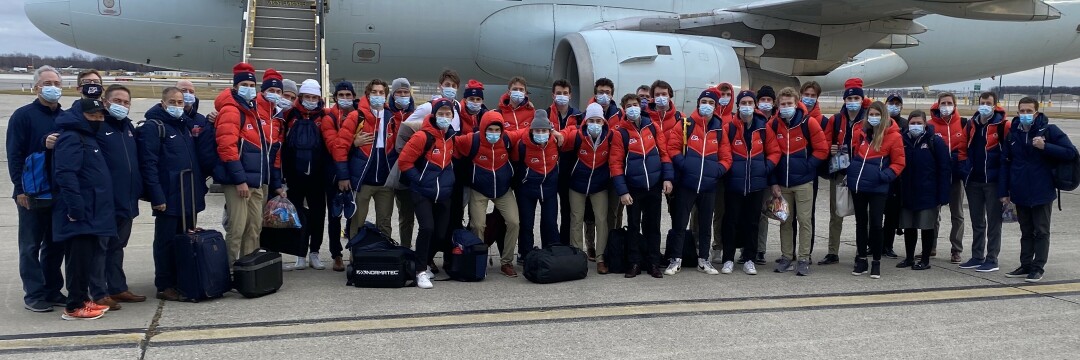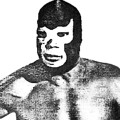News & Articles
Browse all content by date.

2021 Team USA World Juniors
WEST DULUTH – One of my favorite times of the year is close at hand with the holiday’s arriving. And to enhance the season, in a “normal” year, there would be many options available for taking in some hockey action, from mini-mites to the NHL.
This year, the choices are fewer, but there will be some high-quality hockey. One of these events is the IIHF World Juniors tourney. In just the past few days, roster selections have been finalized and submitted. The various teams and their traveling parties are en route to Edmonton, AB, to wind down their preparations and plans for competition.
One of the hidden bonuses of this event is that a certain percentage of these players will become tomorrow’s professional stars. I find it interesting to watch them and analyze what they might bring to the pro game once they get there. Now and then, a player will come out of nowhere, unexpectedly, and put on a performance for the ages. Others, who might have had some high expectations, sometimes fizzle under the bright lights.
Since most of these players are already NHL draftees, it forces their club to reassess what they have.
Either way and no matter why you watch, we will be in for a hockey treat when this tourney begins. Of course, I take in a lot of the Canadian press regarding the tourney, and obviously, they give it much more coverage there then it gets stateside. That’s a shame. These emerging players and their organizing bodies work as hard as anyone in the game and should benefit from the full promotion of it.
The first faceoff will be on Christmas day. In quite a few of the most recent tourneys, USA faced off versus Canada to start the tourney. This year they are in opposing pools, so the Americans will meet the Russian entry that day. Canada will face Germany.
In Group A, Canada, Switzerland, Finland, Slovakia and Germany.
In Group B, United States, Russia, Sweden, Czech Republic and Austria.
You might look at both pools and think there are a couple of teams with an easy path to the medal rounds. However, the level of play, the number of high-value players, coaching and strategies have tightened this competition. It’s fair to say the favorites should still emerge from round-robin play, but it’s no longer a given.
With the pandemic still dominating options regarding available players and staff, The IIHF is erring on the strict side of caution, as they should. With some positive tests emerging, roster changes have been made.

Some pro clubs have decided they do not want their drafted properties to participate, which has impacted what some of the personnel decisions would be.
With the NHL moving toward a mid-January start, the NYR are still debating whether to allow #1 overall draft pick Alexis LaFreniere to compete for Team Canada. I think that a comprehensive risk analysis would say that it’s not worth it for him to go. He has already been there, won Gold, and between the chance for injury or a positive COVID test, I’m left to wonder why there is even a debate here. This kid is on the front end of what could be a long term, highly successful pro career. Why go?
As has been the case with current practice, the USA roster is dominated by collegians, some juniors, and most of them have had experience in the USNTDP.
After much early controversy, I believe this program has returned some substantial value to American hockey and has raised the stature of USA Hockey in many venues.
So, how will the event play out? It begins with round-robin play in your pool, with the four highest placing teams advancing to the medal round. The most games you could play would be six, and it’s single elimination in the medal round.
The online wagering site, Odds Shark, has set its odds with Canada as the favorite to win Gold, then the USA, with Russia going for Bronze. Canada is at -130 odds, with the USA set at +375. That’s quite a difference, and likely reflects the oddsmakers feeling about how much better than everyone else they think Canada is. But are they?
They are the most decorated team in the history of this tourney, so history backs them. But, the competitive gap has closed considerably in the past 10 to 15 years. Of course, you have to factor in a major upset or two at this age level.
Sweden and Finland occupy the four and five spots. That is a bit of a surprise to me. Even in a “down” or transitional year, these two clubs are usually a tough out.
How do I see it? The main question regarding the Canadians is between the pipes. How do you take advantage of that?
Sustained offensive pressure is one way. But it’s easier said than done. In observing some recent WJ’s and in some of the summer events, I’d get frustrated watching the USA team. In my view, they could compete with any team there. But simply gaining the offensive zone didn’t mean they’d get any grade-A chances. So I watch, and I grind my teeth.
As is usually the case, some Canadian media are relatively confident about how the tourney will go. Whether it be the Olympics or the WJ’s, I can almost recite the cliches coming out. It used to upset me, but they don’t even get an eye roll at this point.
One prominent Canadian media member stated recently, “I think they’ll go undefeated.” That’s not quite at the level I heard a few years back that “Canada could fully roster two Olympic teams and win the Gold and Silver.” But as a huge Team USA fan, I have to say that it does grate. It’s kind of like, why are we bothering to hold the event?
After being absent on the podium at the most recent 2020 WJT, does the USA return to medal form? It’s entirely possible. So long as we are going after one, how about that Gold one?
THE NHL IS MOVING toward a mid-January start with a 56-game schedule. While there is still some rumbling among the teams and their GMs about who will end up where, I think they are pretty close to what we will see. In the current divisional schematic being offered, there will be an All-Canada division (and I think that’s what it should be called), then a revival of the old Central, and then merely a non-creative East and West division. The Minnesota Wild will reside in the Central with seven of their closest NHL friends.
Of note is that defending Stanley Cup Champ Tampa Bay will also be in the Central. It is also an eight-team division, so getting a playoff spot just got more challenging as in “no off-nights allowed.” It is going to be interesting! PEACE
| Tweet |


